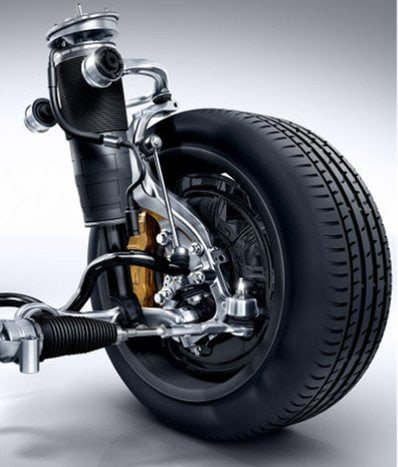The Future of Software in Car Suspension Durability

The impact of software on modern vehicles continues to grow, influencing everything from engine performance to driver assistance systems. In the field of automotive suspensions, software plays an increasingly important role in improving durability, optimizing performance and guaranteeing vehicle safety. As automotive technology evolves, software-based innovations are set to revolutionize the operation and longevity of suspension systems.
1. Adaptive Suspension Systems
One of the most promising developments is the use of adaptive suspension systems that rely on software to adjust damping forces in real time. These systems are equipped with sensors that monitor road conditions, vehicle speed and driver inputs. The software processes this data and adjusts the suspension accordingly, resulting in a smoother ride and improved handling.
In terms of durability, these adaptive systems reduce wear on suspension components by continuously optimizing their performance. By adjusting to driving conditions, the system can avoid overloading components or causing excessive wear in certain driving scenarios. This leads to longer-lasting suspension parts and reduced maintenance requirements.
2. Predictive Maintenance through Data Analysis
As vehicle connectivity increases, software-based predictive maintenance tools are set to play a key role in improving suspension durability. Using IoT sensors and machine learning algorithms, vehicle systems can monitor the condition of critical suspension components in real time. For example, the software can monitor shock absorber performance, tire pressure and suspension alignment to detect early signs of wear or failure.
By analyzing this data, the software can predict when maintenance or part replacement is required, enabling proactive repairs before failure occurs. This reduces the risk of catastrophic suspension damage and ensures that components are replaced at the optimum time, preventing excessive wear and extending their service life.
3. Active Suspension Control
Active suspension systems, which continuously adjust suspension stiffness to maximize comfort and performance, will also benefit from software advances. These systems use a combination of sensors and advanced algorithms to adjust suspension behavior according to road surface, speed and driving conditions.
For durability, active suspension software can manage load distribution more effectively, reducing stress on individual suspension components. This means that parts such as springs, dampers and seals experience less repetitive stress and wear over time, reducing the risk of failure and extending suspension life.
4. Machine Learning for Performance Optimization
The integration ofmachine learning andartificial intelligence (AI) into suspension software will help improve the performance of these systems. These algorithms can learn from large quantities of data collected while driving, improving the software’s ability to predict and react to different conditions.
For example, AI can analyze how the vehicle’s suspension interacts with different types of road, or how driving behavior affects system wear. Thanks to this information, the software can continuously adjust suspension settings to optimize both performance and durability.
Conclusion
The future of software in automotive suspension durability lies in precision, adaptability and intelligence. Using real-time data, predictive analysis and advanced algorithms, software can optimize suspension system performance, reduce wear and extend service life. These innovations will not only enhance vehicle comfort and safety, but also reduce maintenance costs and increase overall vehicle reliability.
